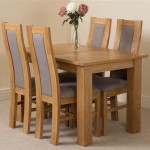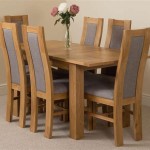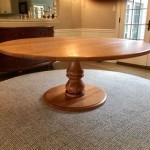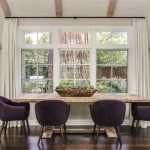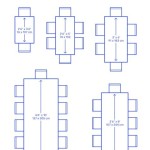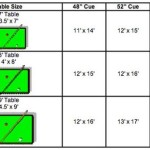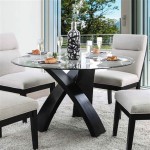```html
Square Wood Outdoor Dining Table: A Comprehensive Guide
The square wood outdoor dining table stands as a quintessential piece of patio furniture, offering a blend of functionality, aesthetic appeal, and durability. Its geometric form lends itself to a variety of outdoor spaces, from compact balconies to expansive decks, providing a focal point for al fresco dining and social gatherings. Understanding the nuances of material selection, construction, maintenance, and design considerations is crucial for selecting the right square wood outdoor dining table that will withstand the elements and provide lasting enjoyment.
Material Selection: Understanding Wood Types
The longevity and performance of a square wood outdoor dining table are heavily influenced by the type of wood used in its construction. Different wood species possess varying degrees of resistance to moisture, insects, and decay, factors that are paramount in an outdoor environment. Choosing the appropriate wood is an investment in the table's durability and long-term appearance.
Teak: Widely regarded as one of the premier choices for outdoor furniture, teak is a dense, naturally oily hardwood. Its high oil content provides inherent resistance to water, rot, and insects, making it exceptionally durable even in harsh climates. Teak weathers to an attractive silver-gray patina over time, a characteristic many find desirable. However, teak is a relatively expensive option compared to other wood types.
Cedar: Another popular choice for outdoor furniture, cedar is known for its aromatic fragrance and natural resistance to decay and insect infestation. Cedar contains oils that act as a natural preservative, making it a suitable option for outdoor use. It is lighter in weight than teak and generally more affordable. While cedar is naturally resistant, it may require occasional sealing or staining to maintain its color and prevent splintering over time.
Acacia: Acacia is a hardwood that has gained popularity as an alternative to teak due to its similar appearance and lower cost. It is a relatively dense wood with good resistance to moisture and decay, although it is not as naturally resilient as teak. Acacia requires regular maintenance, including sealing or staining, to protect it from the elements and prevent cracking or warping.
Eucalyptus: Eucalyptus is a fast-growing hardwood that is often used in outdoor furniture production. It is a relatively affordable option and possesses decent resistance to moisture and insects. Eucalyptus typically undergoes a pressure-treating process to enhance its durability. Regular sealing or staining is recommended to maintain its appearance and prolong its lifespan.
Pine: Pine is a softwood that is a more budget-friendly option compared to hardwoods. However, pine lacks the natural resistance to moisture and insects found in teak, cedar, acacia, and eucalyptus. Outdoor pine furniture must be pressure-treated and regularly sealed or painted to prevent rot and infestation. Pine is more susceptible to damage from the elements and may require more frequent maintenance or replacement.
The selection of the appropriate wood type should be based on a balance of budget considerations, desired durability, and aesthetic preferences. Understanding the inherent properties of each wood species will guide the selection process and ensure satisfaction with the final product.
Construction and Design Considerations
Beyond the choice of wood, the construction techniques and design features of a square wood outdoor dining table significantly impact its stability, comfort, and overall aesthetic. Attention to detail in these areas contributes to a table that is not only visually appealing but also structurally sound and enjoyable to use.
Joinery: The way the individual pieces of wood are joined together is critical to the table's strength and longevity. High-quality joinery techniques, such as mortise-and-tenon joints, dovetail joints, or dowel joints, create strong and durable connections that can withstand the stresses of outdoor use. Screws and bolts can be used to reinforce joints, but the longevity of these fasteners must be considered in relation to the chosen wood.
Tabletop Design: The tabletop design influences both the aesthetic and functional aspects of the table. Solid wood tabletops offer a classic and substantial look, while slatted tabletops allow for drainage and airflow, preventing water from pooling and reducing the risk of warping. The edges of the tabletop should be carefully finished to prevent splintering and provide a comfortable surface for resting arms.
Leg Design and Support: The design and placement of the table legs are crucial for stability and balance. Angled or splayed legs provide greater stability than straight legs. Crossbars or stretchers connecting the legs add further reinforcement and prevent wobbling. The height of the table should be appropriate for comfortable dining, typically around 28-30 inches.
Finish and Treatment: The finish applied to the wood plays a crucial role in protecting it from the elements. Sealants, stains, and paints can provide a barrier against moisture, UV radiation, and insect damage. The choice of finish should be compatible with the type of wood and the desired aesthetic. Regular application of sealant or stain is often necessary to maintain the finish and prevent degradation.
Size and Seating Capacity: Square tables are well-suited for smaller groups, offering an intimate dining experience. The size of the table should be chosen based on the number of people who will typically be using it. A 48-inch square table can comfortably seat four people, while a 60-inch square table can accommodate six to eight. Consider the available space in the outdoor area when determining the appropriate table size.
Style and Aesthetics: Square wood outdoor dining tables are available in a variety of styles, from rustic and traditional to modern and minimalist. The style of the table should complement the overall aesthetic of the outdoor space and reflect personal preferences. Consider the color, texture, and design details of the table when making a selection.
Maintenance and Care: Preserving the Table's Condition
Proper maintenance and care are essential for preserving the condition and extending the lifespan of a square wood outdoor dining table. Regular cleaning, protection from the elements, and timely repairs can help prevent damage and maintain the table's beauty for years to come. The specific maintenance requirements will vary depending on the type of wood and the finish applied.
Regular Cleaning: Cleaning the table regularly removes dirt, debris, and mildew that can accumulate on the surface. Use a mild soap and water solution and a soft brush or cloth to gently scrub the table. Avoid using harsh chemicals or abrasive cleaners, as these can damage the finish. Rinse the table thoroughly with clean water and allow it to dry completely.
Protection from the Elements: Whenever possible, protect the table from direct sunlight, rain, and snow. Use a furniture cover when the table is not in use or store it in a sheltered location during inclement weather. Prolonged exposure to the elements can cause fading, cracking, and warping of the wood.
Sealing and Staining: Regularly apply sealant or stain to the wood to protect it from moisture and UV radiation. The frequency of application will depend on the type of wood and the climate. Follow the manufacturer's instructions for applying sealant or stain. Before applying, clean the table thoroughly and allow it to dry completely.
Tightening Hardware: Periodically check the hardware, such as screws and bolts, and tighten them as needed. Loose hardware can compromise the stability of the table and lead to structural damage. Use appropriate tools to tighten the hardware without over-tightening, which can strip the threads.
Addressing Minor Damage: Address minor damage, such as scratches or chips, promptly to prevent further deterioration. Small scratches can be repaired with wood filler or touch-up paint. Deeper damage may require professional repair. Ignoring minor damage can lead to more significant problems over time.
Winter Storage: If the table is not used during the winter months, store it in a dry, sheltered location. Clean the table thoroughly before storing it and apply a fresh coat of sealant or stain. Cover the table with a breathable furniture cover to protect it from dust and moisture. Storing the table properly during the winter can significantly extend its lifespan.
By adhering to these maintenance and care guidelines, owners can ensure that their square wood outdoor dining table remains a beautiful and functional centerpiece of their outdoor living space for many years.
```
Noble House Camdyn Teak Square Wood Outdoor Dining Table 7245 The Home

Noble House Stamford Teak Brown Square Wood Outdoor Dining Table 42607 The Home

Sunnydaze Decor Square Outdoor Dining Table 31 5 In W X L With Umbrella Hole The Patio Tables Department At Lowes Com

Noble House Stamford Gray Square Wood Outdoor Dining Table 42608 The Home

Outdoor Interiors 42 In Square Wood Dining Table 42445 The Home

Luxcraft Poly Island Square Outdoor Dining Table Set From

Square Acacia Wood Outdoor Dining Table With Umbrella Hole Costway

Square Acacia Wood Outdoor Dining Table With Umbrella Hole Costway

Sophia William 37 X Outdoor Dining Square Table Brown Steel Frame For 4 Chairs Walmart Com

Square Outdoor Dining Table Sun Bleached Gray Corliving

